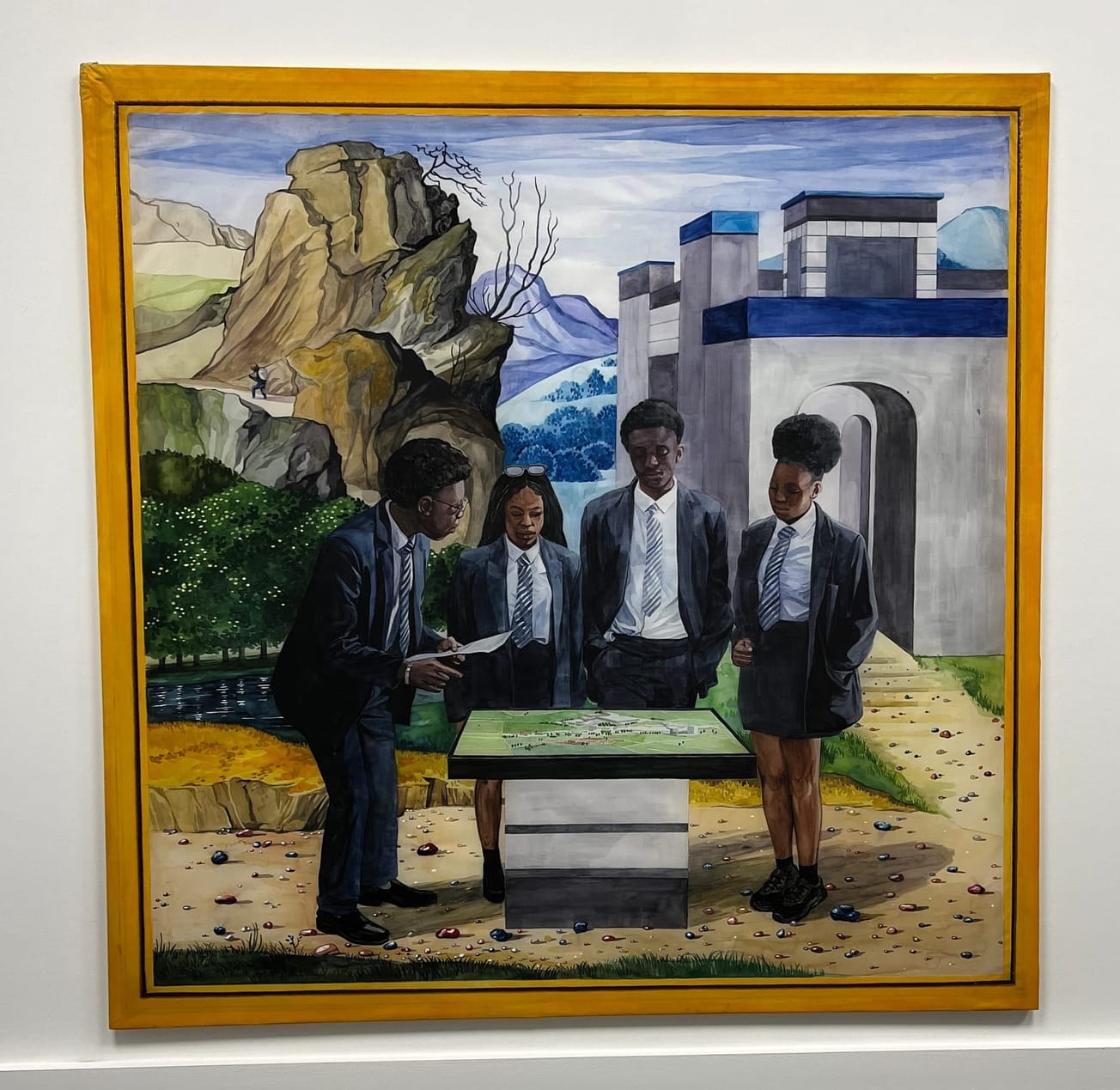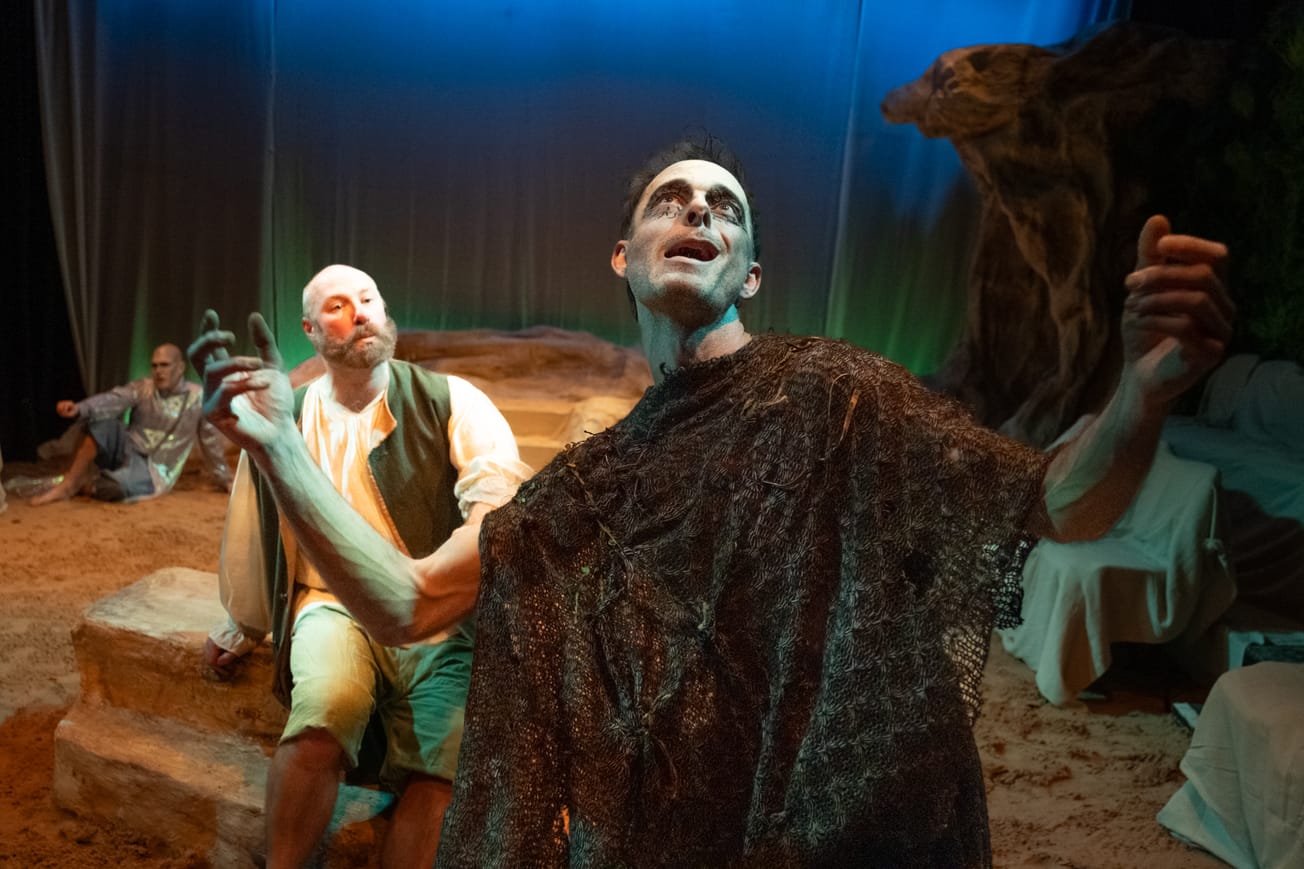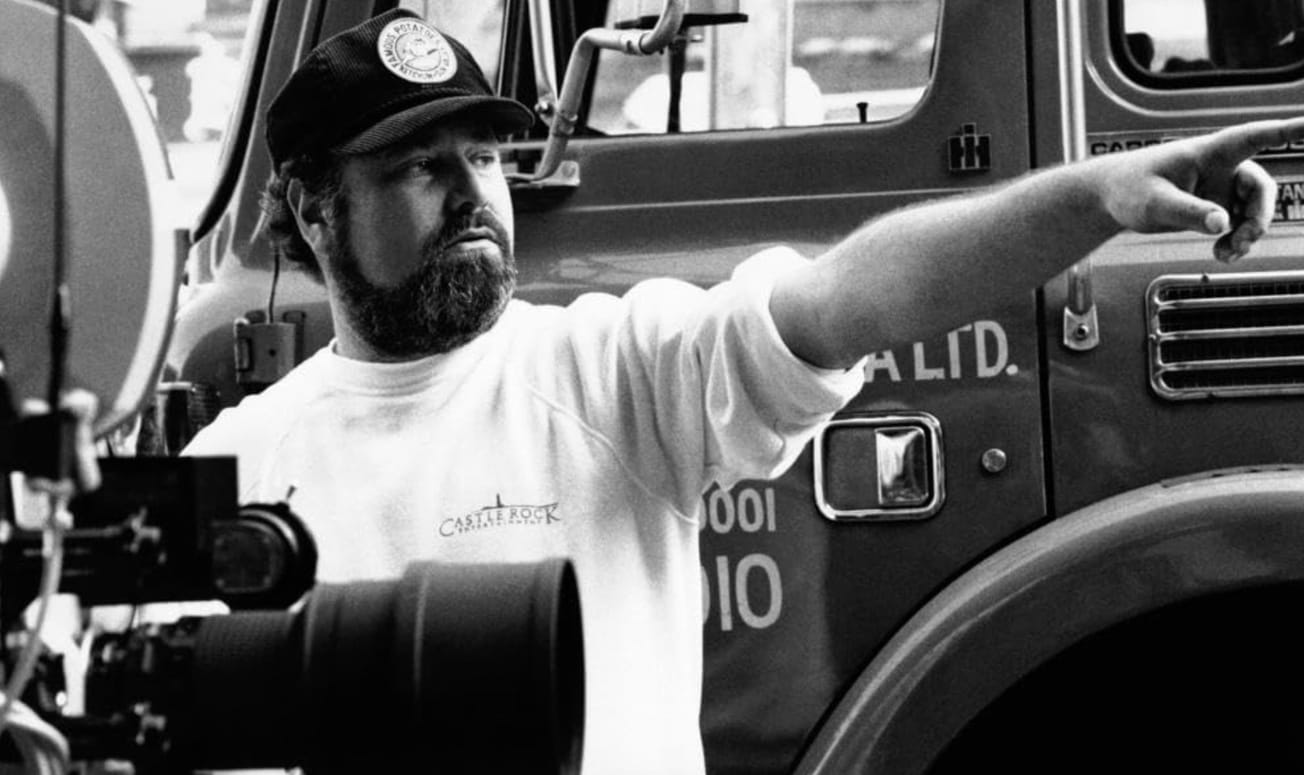By Eden Chambers, First Year, Film and French
Danielle Dean’s ‘This Could All Be Yours!’ and Dan Guthrie’s ‘Empty Alcove / Rotting Figure’ form a clever coalition at the Spike Island exhibition space, supporting and contrasting one another through their representations of multicultural Britain’s reality.

Dean’s collection pays tribute to her lived experience in Hemel Hempstead, using this as a platform to depict commerciality and racialised identities within popular culture. Her film Hemel (2024) provides an axis from which her multimedia exhibition expands, such as paintings which have a breathtaking nostalgia, despite their individuality to the artist.

These sympathetic paintings use contrasting symbols and colours to show the disjunction between identity and place in modern Britain, whilst recounting the somewhat peculiar history of a seemingly ordinary town. The complex homage she pays throughout her film blurs the line between fact and fiction, reimagining the story of Hemel Hempstead.

Guthrie’s 2-part experience uses moving image to imagine the destruction of the Black Boy Clock in Stroud, Gloucestershire. The first film Empty Alcove (2025) envisions the removal of the racist emblem from the clock, contrasting the old building with the ambient noise of a modern world filled with cars and laughing children.

As you move into the dark box where Rotting Figure (2025) is displayed, the familiar sounds of a busy town fade into the eery creaking of the Black Boy Clock’s form collapsing under a vinyl-type material. The unpredictability of the figure’s breakdowns creates a palpable tension, reminiscent of the strain between local authority and protestors of the clock in Stroud. The whole experience evokes feelings of disgust and confusion, calling into question how and what we should memorialise from Britain’s past.









